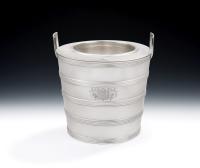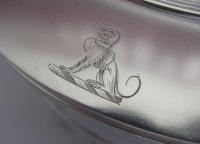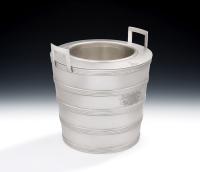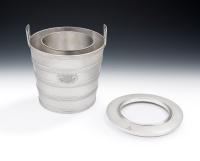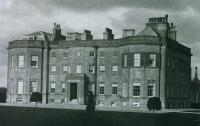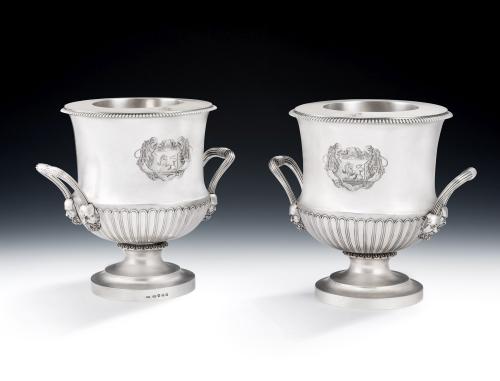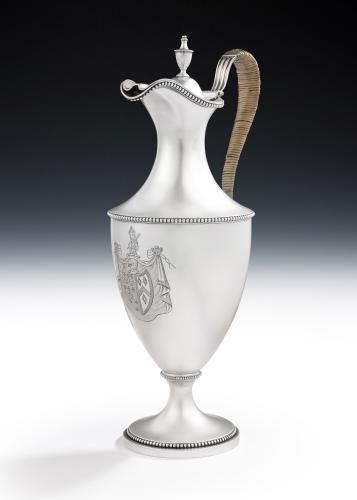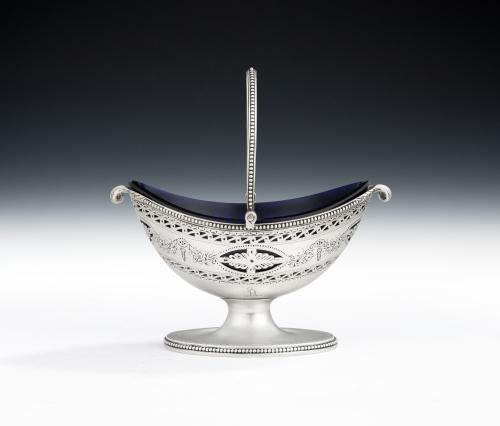
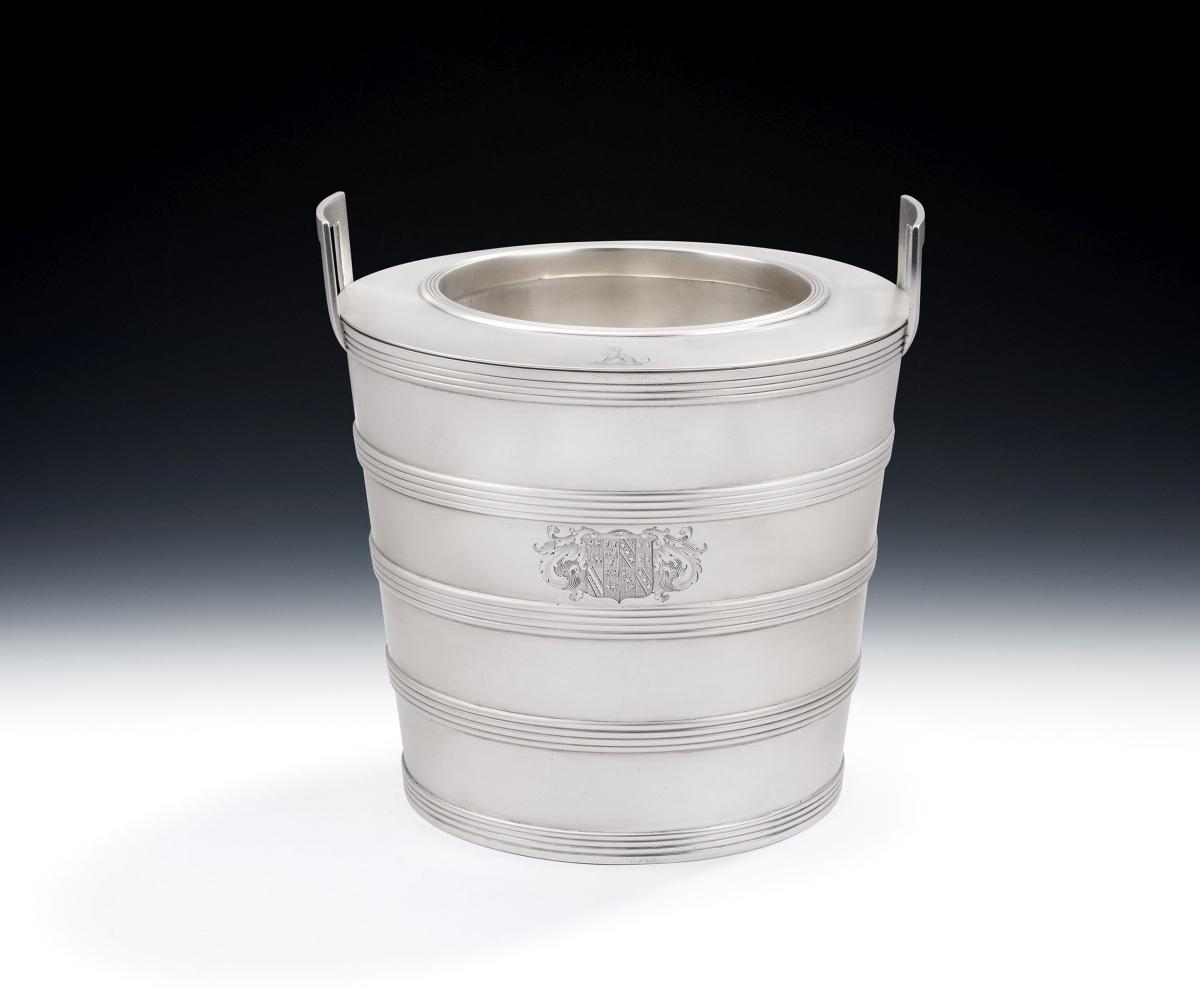
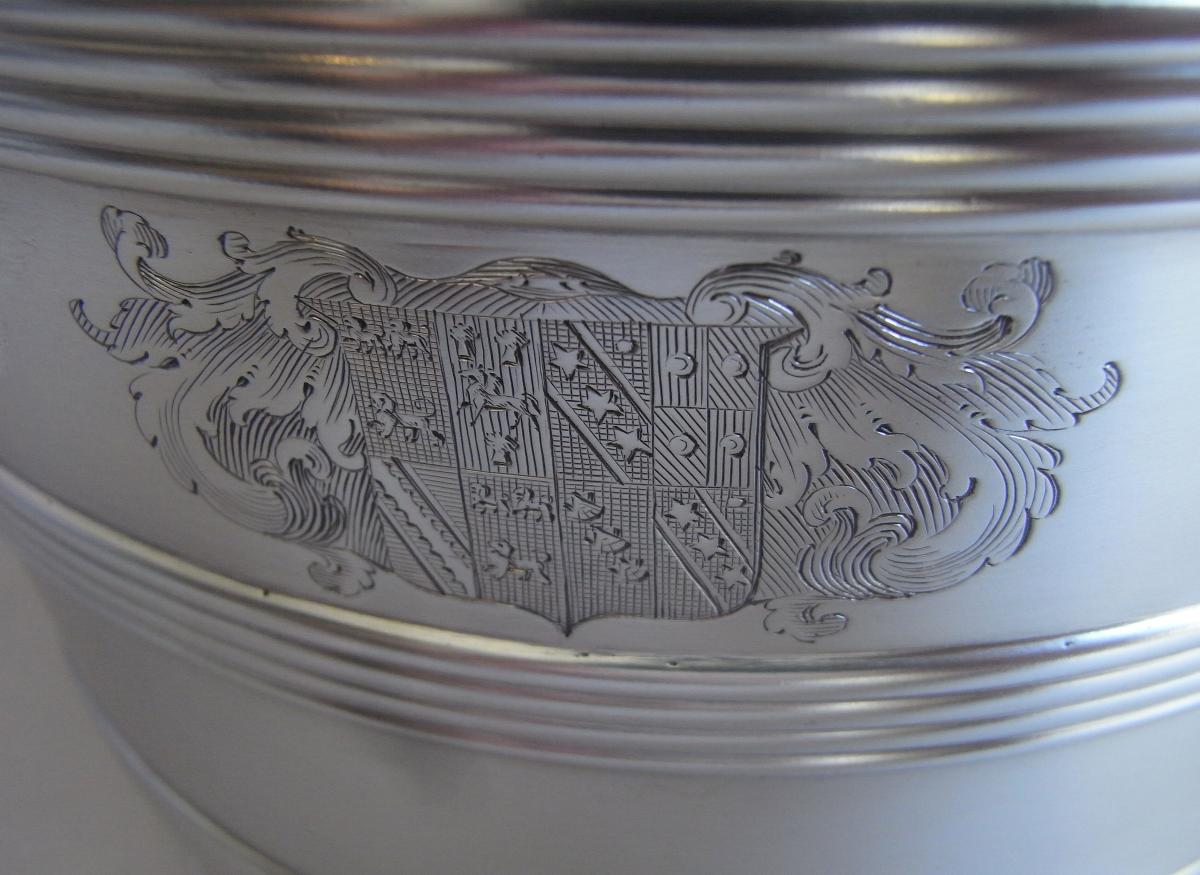
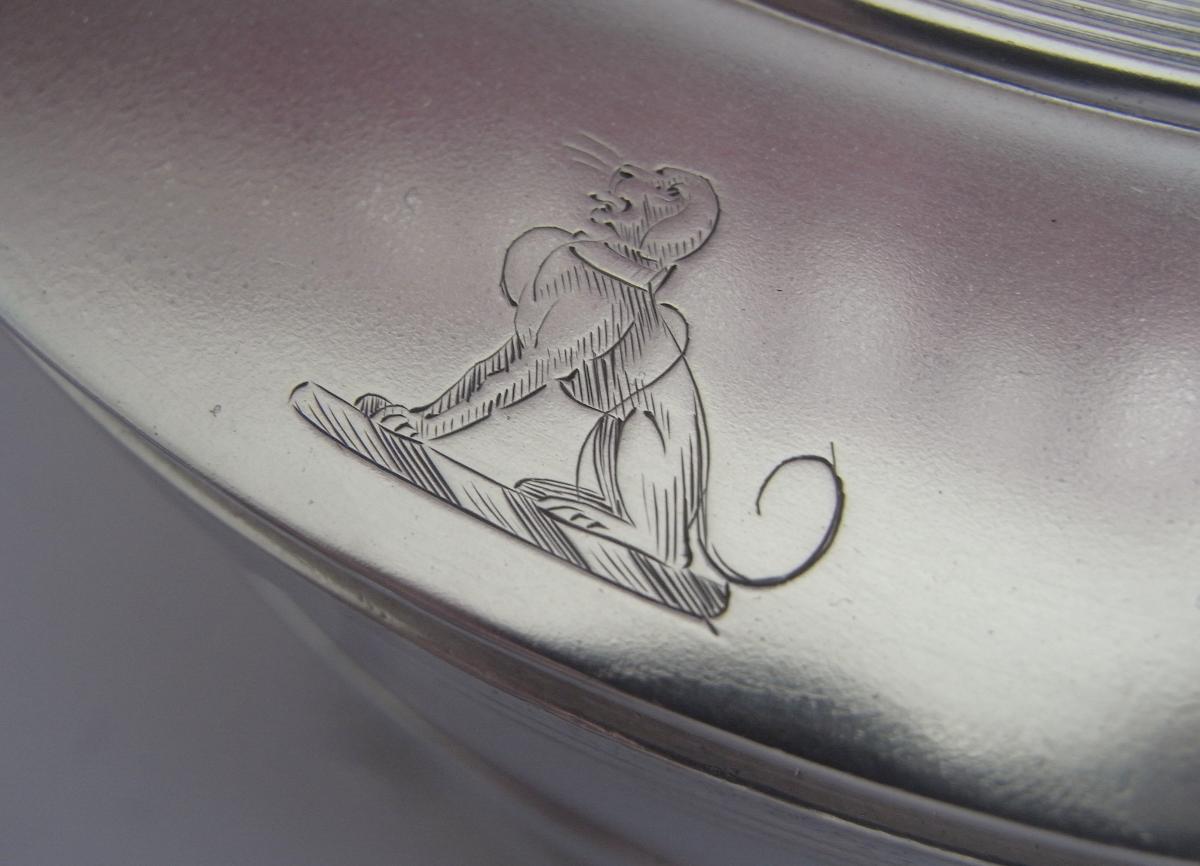
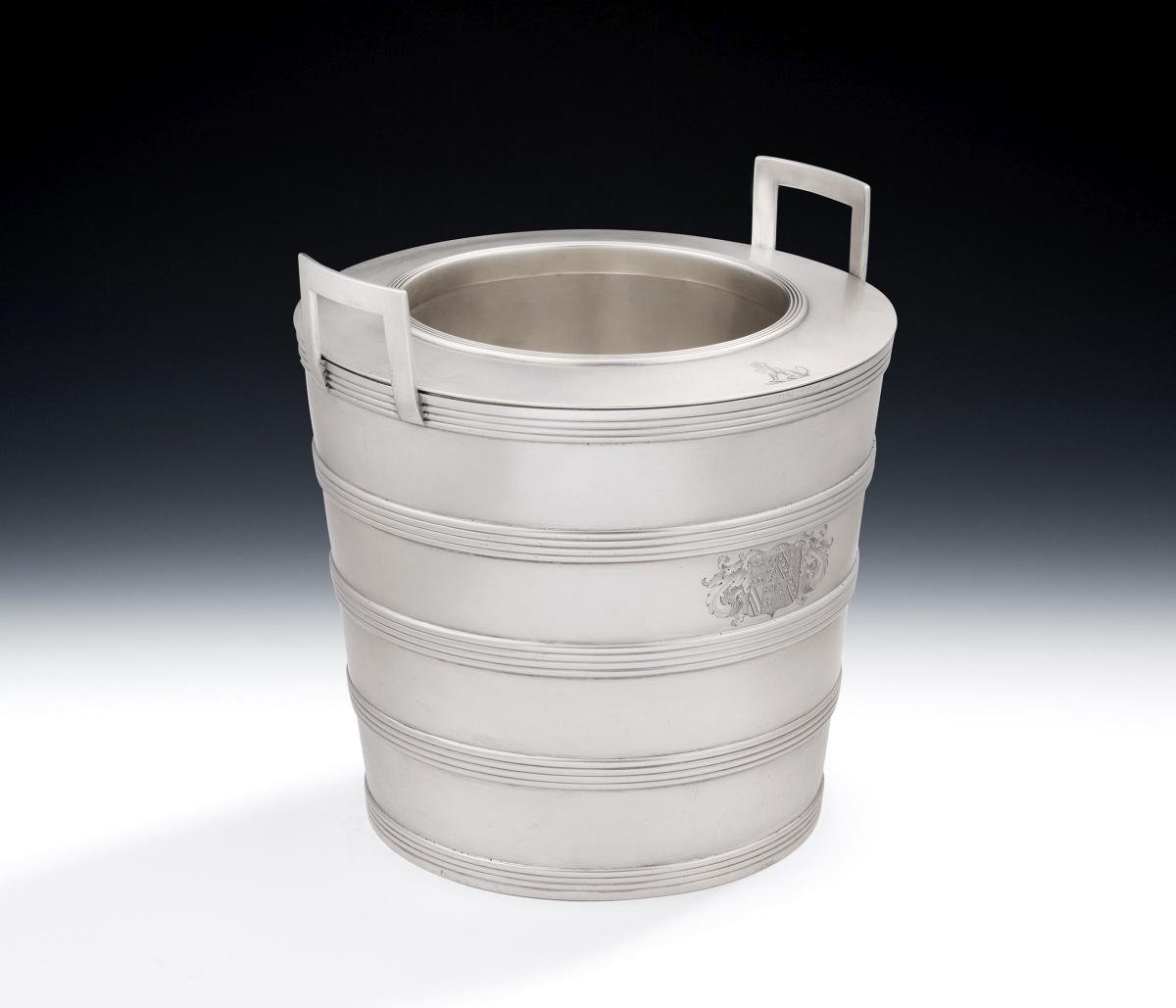
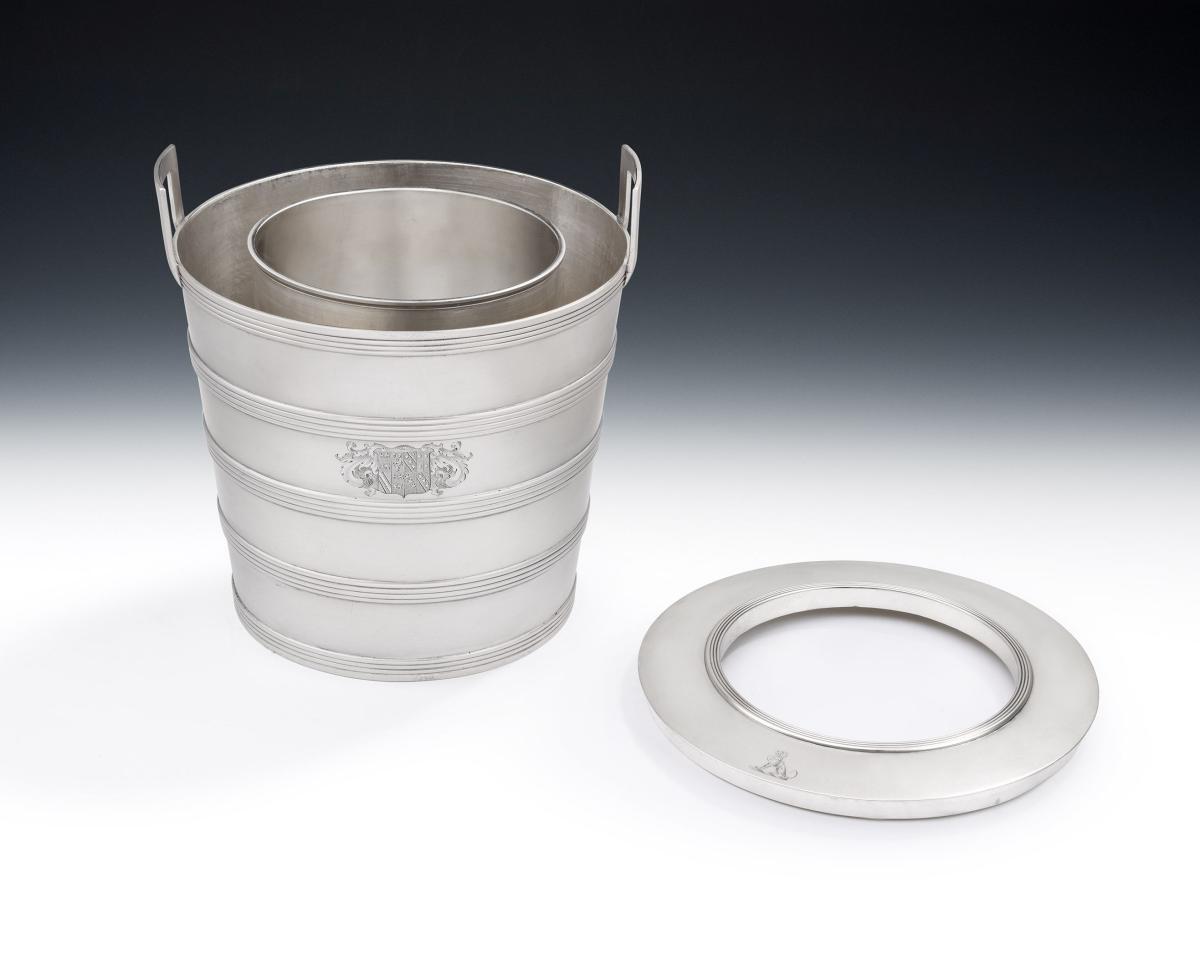
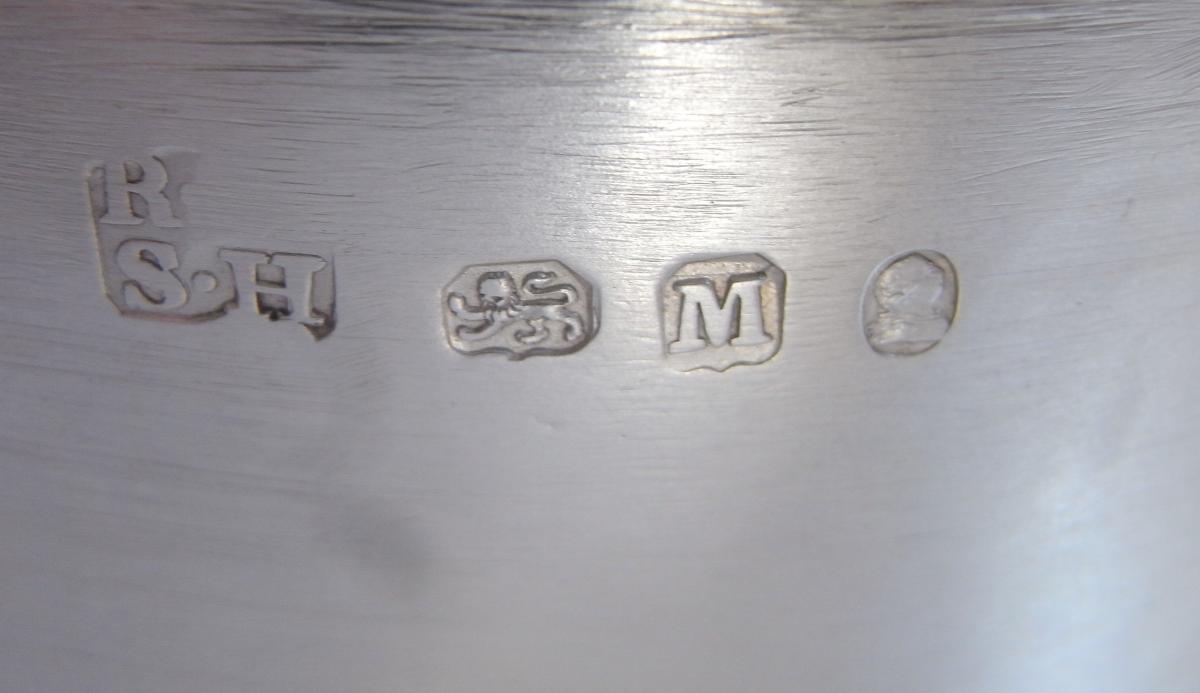

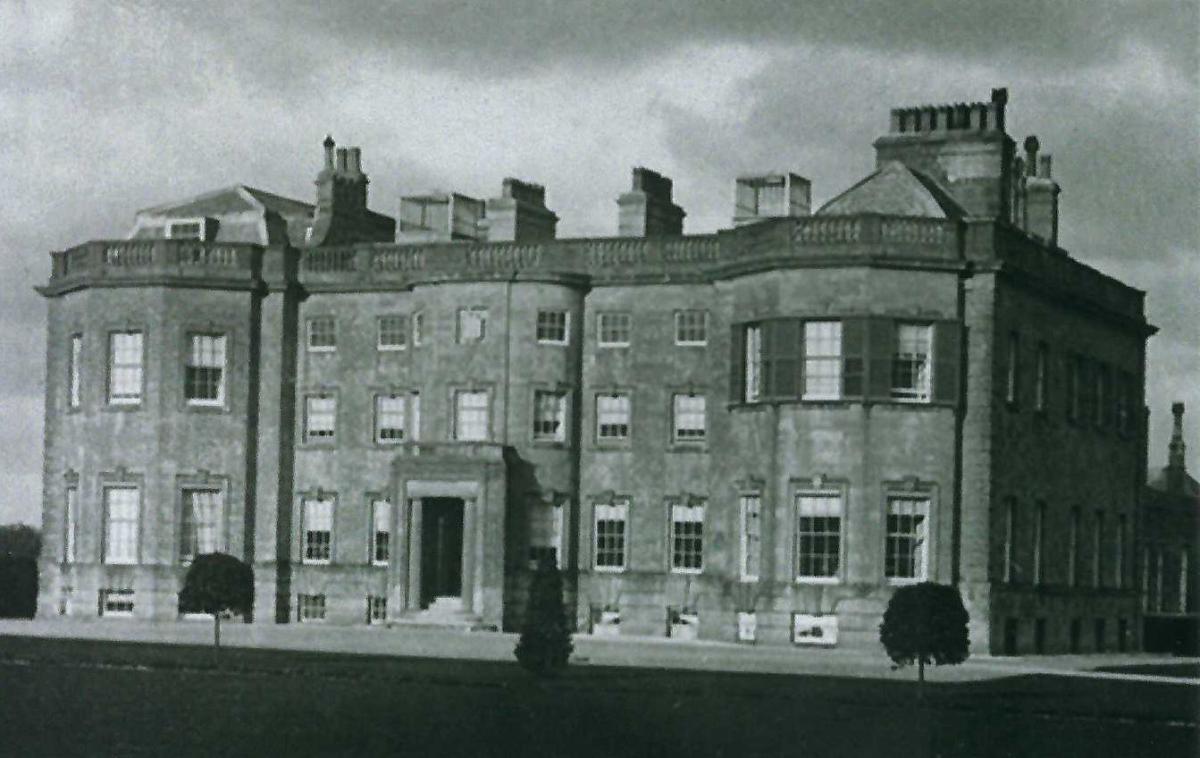
Price
£22000.00This object is eligible for a Certificate of BADA Provenance
The BADA Standard
- Since 1918, BADA has been the leading association for the antiques and fine art trade
- Members are elected for their knowledge, integrity and quality of stock
- Our clients are protected by BADA’s code of conduct
- Our dealers’ membership is reviewed and renewed annually
- Bada.org is a non-profit site: clients deal directly with members and they pay no hidden fees
The Mells Park Bucket Wine Cooler. An important George III Wine Cooler made in London in 1807 by Robert I & Samuel Hennell.
This important George III Wine Cooler is realistically modelled as a Bucket, with a circular tapering body with five raised reeded girdles to simulate the metal hoops on a wooden bucket. This example has two flat rectangular section carrying handles and a lift out liner with bottle support and removable collar, with inner reeded edge. The front of the main body is engraved with a detailed shield shaped Armorial featuring many divisions with stars, pellets, scallops, dogs and a horse. The Armorial is surrounded by a pluming foliate scroll cartouche and the rim of the collar is engraved with a dog Crest, seated on its haunches. The Cooler is in quite exceptional condition and is fully marked on the main body, bottle support and collar.
The Arms and Crest are those of Horner of Mells, County Somerset, impaling Hippisley. They are for Thomas Strangways Horner of Mells Park, who married Margaret Frances Hippisley, daughter of Sir John Hippisley, in 1805. He was born in 1762, son and heir of Thomas Horner. Educated at Corpus Christi College Oxford, matriculating in 1783, aged 21. He was subsequently awarded the degree DCL (Doctor of Common Law) in 1810. He was Commanding Officer 1804-39 of the North Somerset Yeomanry. He died in 1844, having succeeded his father in 1804, and a portrait of him is shown.
The Horners of Mells acquired the Mells estates during the great redistribution of land caused by the dissolution of the Monastries by Henry VIII. The nursery rhyme Little Jack Horner refers to the first of the Horners of Mells, however whether the "plum" refers to the estate or its rich lead mines (the latin for lead being plumbum) is open to debate. Mells Park, also known as Park House, was built in 1724 by Nathaniel Ireson and an image is shown before its destruction by fire on 11th October, 1917.
The last of the male line, Edward Horner, was killed in the First World War. The estate was inherited by his sister Katherine who married Raymond, son of Herbert Asquith, the future Prime Minister. Raymond was also killed in the First World War. Mells Church is a very large and fine church. In the churchyard, at the East end, are the graves of the Horners and their successors and many of their friends, including the poet Siegried Sassoon and Monsignor Ronald Knox. The church is full of Arts and Crafts monuments and a sculpture by Alfred Munnings of Edward Horner, last of the male line, in military dress, seated on his horse. There are also several monuments etc by family friend Burne-Jones in the church.
Georgian Silver Wine Coolers, modelled as a bucket, are extremely scarce. This is the first time we have seen a Georgian example coming from the Hennell workshops. This most probably left the Horner family after the fire in 1917 and was recently purchased from the Collection of His Grace The Duke of Bedford at Woburn Abbey, Bedfordshire.
Height, to the top of the handle: 8.25 inches, 20.63 cm.
Diameter, at the rim: 7.75 inches, 19.38 cm.
Weight: an outstanding 80oz.
Stock number
374645The BADA Standard
- Since 1918, BADA has been the leading association for the antiques and fine art trade
- Members are elected for their knowledge, integrity and quality of stock
- Our clients are protected by BADA’s code of conduct
- Our dealers’ membership is reviewed and renewed annually
- Bada.org is a non-profit site: clients deal directly with members and they pay no hidden fees


